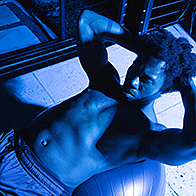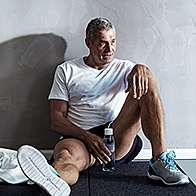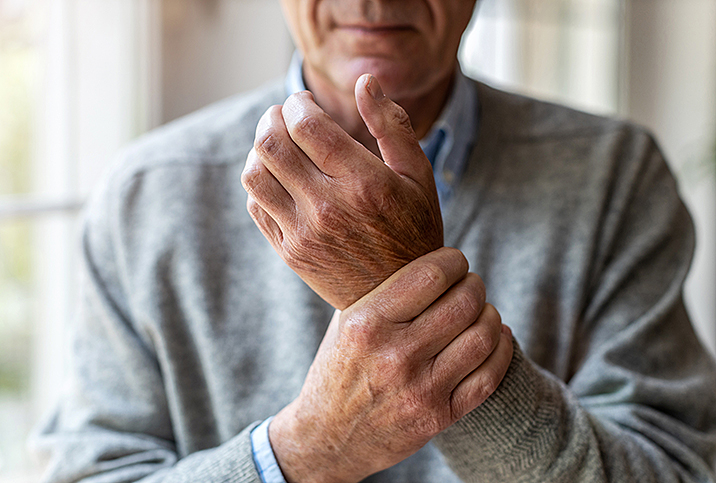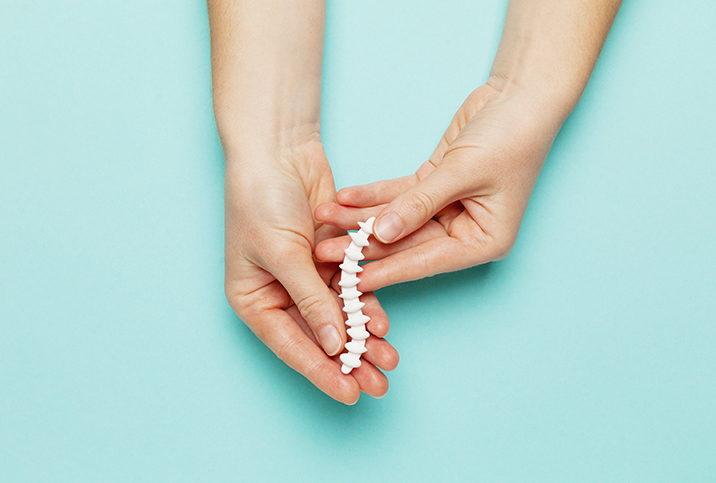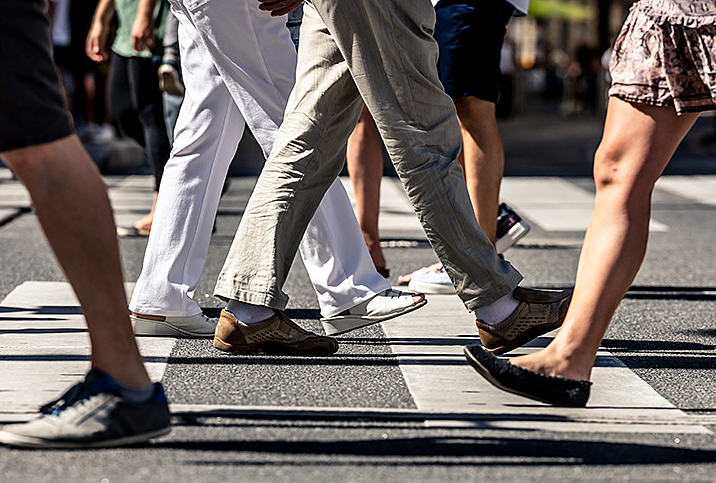Exercises to Relieve Osteoporosis
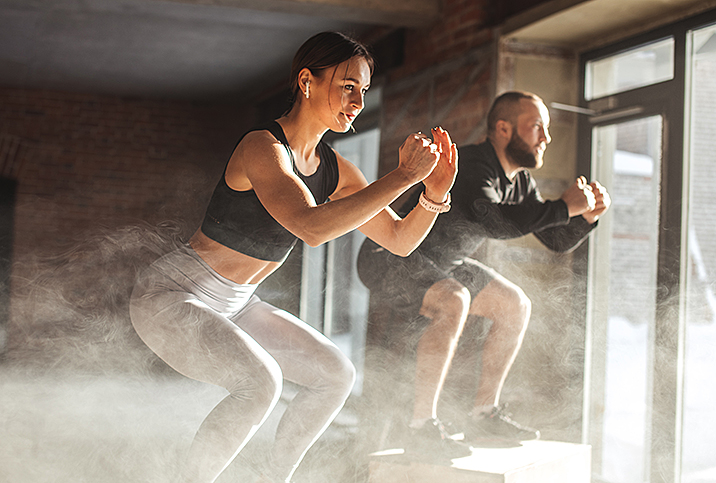
For many people, especially those who are younger and male, osteoporosis may not seem like a major health concern. It's just something postmenopausal, thin white women get, right?
To be fair, those are common risk factors for osteoporosis, but contrary to popular belief, people of all ages, races and sexes can end up losing bone density and strength over time, which can negatively affect overall health and quality of life. Just because bone loss is a common age-related health problem, that doesn't mean you can't prevent, limit and even reverse it to some extent.
Exercise is an excellent way to preserve and improve bone mineral density, but not all forms of exercise are helpful. Here's what you need to know.
Why osteopenia and osteoporosis can occur
If you refer back to high school anatomy class, you may recall bone cells consist of osteoclasts and osteoblasts. Osteoclasts are responsible for the breakdown and removal of bone cells, a normal, important process. Osteoblasts—in communication with osteocytes—are responsible for building up and generating the bone matrix.
When these two processes get out of sync, and osteoclasts are more active than osteoblasts, bone density is lost over time. As you age, if bone density loss isn't replaced, osteopenia or osteoporosis can develop, resulting in bones that are likely to become weak and brittle, thereby increasing the likelihood of fractures.
Most of you have probably experienced a fracture at one point or another, so I don't need to tell you a broken bone isn't fun—it hurts and the healing process isn't quick. However, it's much worse when your bones are brittle.
Individuals with significant bone loss who experience a fracture can't heal as quickly or as well as those with normal bone remodeling because their osteoblasts simply aren't creating bone cells at a rate that keeps up with the breakdown. An extended and difficult recovery can contribute to the development of additional health problems.
This is especially true when the broken bone, such as a hip bone, is important for the patient's mobility. In fact, a 2010 study found that the one-year mortality rate of individuals over 60 years old suffering a hip fracture was roughly 21 percent. Age and activity level were factors that helped predict the likelihood of death, but regardless, the findings were harsh—1 in 5 died within a year of the fracture, with many older women dying within three months. As the study stated, "Hip fractures are associated with significant morbidity, mortality, loss of independence and financial burden."
Losing bone mass is a big deal and it becomes a more substantial issue with age. If you can build bone mass and prevent excessive loss, you're going to be in a better position to live well, independently, and with good health as you enter your golden years.
How exercise is helpful for strong bones
One of the things studied, and studied, and studied some more is how exercise is beneficial for building strong bones. This is largely because of the mechanical loads exercise entails, including ground reaction force—the force of your body pressing against the earth and the earth pressing back—and skeletal muscle contractions—the pushing and pulling of your muscles at the origin and insertion points of the bone. In fact, exercise has been shown to help improve bone mineral density in men and women of all ages, including the elderly and people who have already experienced bone loss.
While exercise appears to be most beneficial for long-term bone development in childhood, adolescence and young adulthood, when the bones are actively growing and remodeling, it's also beneficial later in life.
Not all types of exercise are equally beneficial. What research has uncovered is load-bearing activity—whether it's with weights or your own body weight—is most helpful for inciting osteoblast activity. The impact of taking a step or doing a squat places force and load on the bones, forcing them to work harder to support the exercise. And just as lifting weights encourages muscle growth, it also encourages bone growth because the muscles and bones must work together to physically support your body's movement.
"Our bodies are very smart. When they're required to do something like stand, walk or lift, our muscles direct energy and effort to help make it happen," explained Emily Johnson, founder of StrongerU Senior Fitness. "This is why a scrawny teenager can start working a job in construction and finish the summer with lean, strong muscles. The body reacts to the demands placed on it. The same goes for the bones. Outside forces like walking make a bone strong and healthy. But if we spend our days sitting, the body sees no reason to continue to fortify the bones."
The best exercises to support bone health
"To maintain and enhance bone health, individuals need to engage in weight-bearing exercise," Johnson said. But she's quick to note that "weight-bearing" doesn't have to mean "weight lifting"—although that's included, too.
"Walking is one of the best exercises to preserve bone mass in the lower body," she said. "For the upper body, wall pushups, biceps curls and chair dips all help."
It's important to understand the difference: Bone density is gained and lost based on which bones are being stressed. Just as doing squats all day may help you build strong glutes but won't do a thing for your biceps, walking regularly may help support strong bones in your legs, but won't help keep the bones of your shoulders strong. As such, it's important to craft a well-balanced, total body weight-bearing routine to sufficiently support ongoing bone growth throughout your body.
One thing to keep in mind is that while simple weight-bearing exercises like walking are good for bone health, a mixed-impact approach that combines higher-impact movements and more intense weight-lifting exercise can be more rewarding.
"Heavy resistance training and weight-bearing, impact-loading exercise is even better," said Stephanie Carter Kelley, Ph.D., a yoga physical therapist. "Back squats, deadlift, overhead press with weight, jumping pull-ups with a 'drop' landing, jump rope, box jumps and forward leaps onto one leg are all examples of the types of resistance training and impact loading that really make a difference."
That said, Kelley is quick to point out that this type of exercise isn't appropriate for everyone, especially those just starting a workout routine.
"People with bone density impairment who have never done resistance training need to ramp up to this type of training to make sure they have adequate shoulder, spine and hip range of motion and are using proper form," she explained. "Likewise, care needs to be taken with how to start jumping, especially as many people with osteopenia/osteoporosis also have osteoarthritis. Progressing impact loading too quickly could result in pain or swelling."
Starting out slowly, exercising two to three times per week, and gradually increasing the intensity and challenge of the exercises is the best way to proceed. It's always a good idea to work with a qualified trainer to make sure you're performing each exercise correctly.
But if high-intensity, strenuous exercise like jumping rope or lifting weights isn't for you, you don't need to worry. There's no reason you can't stick to walking and perhaps add yoga to the mix.
Yoga can be an important part of bone-building, as performing various positions places pressure on the bones and joints.
"Specific yoga poses have been shown to increase bone density," Kelley noted. "The research methods aren't as sound as research performed on heavy lifting, but yoga is an excellent way to obtain body awareness, adequate flexibility and balance in order to progress to heavy resistance training. Plus, it's also weight-bearing."
As examples, Kelley points to poses like Triangle, Warrior 2, Side Angle and Bridge as good poses for hip strength. Any yoga flow that takes you through a total body series, like a Sun Salutation, does a good job of placing mechanical force on all your major bones and joints.
Making an exercise schedule
As you've no doubt gathered, building and maintaining strong bones doesn't happen overnight.
"Two times a week has been shown to be of benefit to improve bone density over nine months of yoga poses," Kelley explained. "The participants who performed the poses regularly had more improvement in bone health than those who weren't consistent."
But that should be encouraging. Doing a little yoga twice a week for nine months doesn't sound too bad, right? A simple, two-to-five-day-per-week program of yoga and walking will set you up with a great exercise schedule to start protecting your bone health. And when you're ready to ramp things up more, start performing weight-bearing exercises for your upper and lower body such as squats, lunges, pushups, bench dips and shoulder press.
Weight-bearing is key
Just remember, when it comes to building bone mass, you have to place a mechanical load on your joints. As such, exercises like swimming or cycling won't be as effective at supporting bone health because they're not weight-bearing exercises. To build stronger bones, you have to stress them out a little bit.
At the end of the day, supporting bone health through exercise isn't so hard. But it does need to be approached intentionally. Carve out time to exercise each week, and make sure to schedule at least two to three days of exercise, including weight-bearing movements for your upper and lower body.







